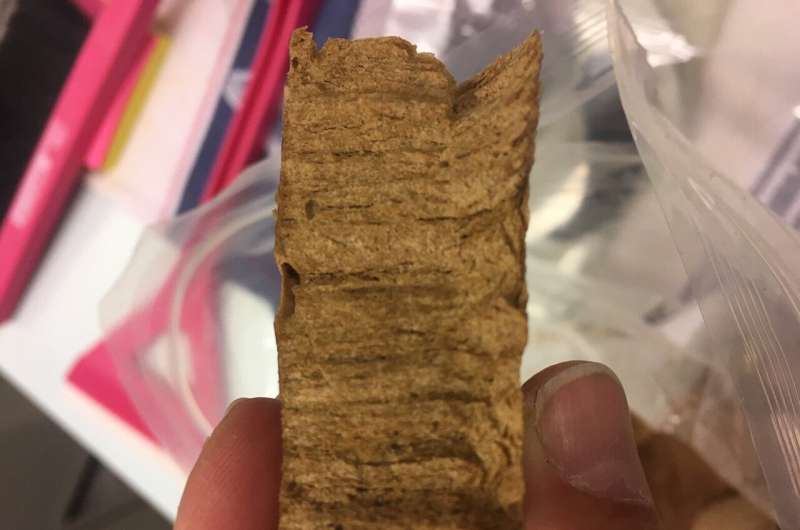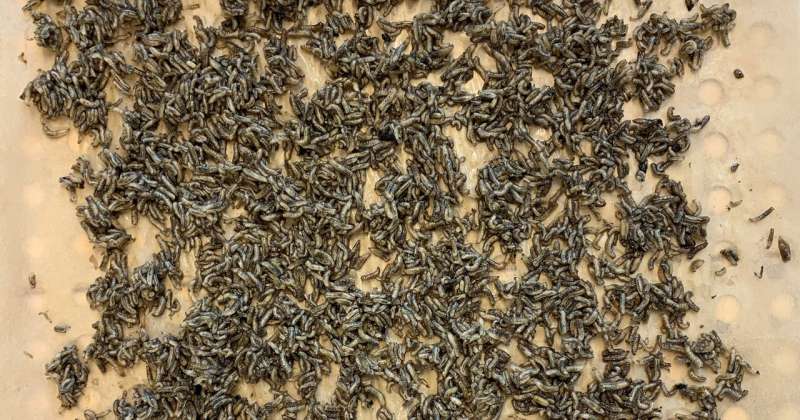Yeast and kelp flies can replace fishmeal in feed for farmed salmon, suggests thesis

Kelp flies and marine yeast cultivated on by-products from the seafood industry can be used in feed for farmed salmon. Replacing fishmeal and soybeans can create more sustainable and circular food production, according to a thesis from the University of Gothenburg.
Food from aquaculture, such as farmed fish, is the food industry's fastest growing sector. One key reason is that this is a nutritious and protein-rich food that is generally more sustainably produced than protein from land animals.
However, fish farming also has challenges. One, is obtaining sufficient amounts of sustainable high-quality feed. Currently, fish feed accounts for about half of both the carbon footprint and production cost of farmed fish. By studying alternative and more sustainable fish feed ingredients, researchers at the University of Gothenburg hope to make aquaculture even more sustainable.
A new thesis proposes kelp fly larvae and marine yeast as suitable alternatives to fishmeal and soybeans in feed. These two raw materials can be produced using by-products from the seafood industry, which would otherwise be discarded. The fly larvae and marine yeast have over 50% high-quality proteins and high levels of beneficial omega-3 fatty acids that fish need to grow and thrive—ultimately providing healthy food for humans.
Strengthening the fish's immune system
"Both the fly larvae and the yeast have good nutritional values, and I noticed that the fish had a healthy appetite for the feed," says Niklas Warwas, a doctoral student at the University of Gothenburg. "Another important benefit is that such feed ingredients can strengthen the immune system and thereby protect the fish from diseases.
The focus of Niklas's thesis is on investigating the opportunities for more circular food production that reduces environmental and climate impacts. The marine yeast was cultivated in nutrient-rich brine from the herring processing industry. This brine is a by-product that currently represents a cost for the industry, as it has to be treated before being discharged into the environment. The water could now be reused to produce a new raw material for fish feed instead. In a similar way, kelp flies were fed on a residual product from algae cultivation.

Greater food security
One important advantage is that neither the yeast nor the fly larvae require significant further processing before they can be used as raw material in fish feed, which can reduce the energy consumption of feed production.
"Both the yeast and the insects can be cultivated on a wide range of different organic materials. It is important to create local circular systems where the fish feed can be produced close to the processing factories, which in turn can be located close to the fish farms. This reduces transportation requirements and makes these alternative feed ingredients more competitive."
In today's fish feed, fish meal or soybeans are usually used as a protein source. Both of these are also potential food for humans. Reducing their use in fish feed contributes to greater food security at a time when global trade faces a number of challenges.
"My research can help Sweden to achieve more circular food production, in which by-products are reused instead of being discarded. This contributes to a more resource-efficient food industry, which is important when access to arable land and clean water is under threat and the population is growing."
More information: Warwas, Niklas. Novel Marine Ingredients for Aquaculture—Fish Nutrition, Physiology and Intestinal Health
Provided by University of Gothenburg Farmed wolffish could be on your plate in the future
No comments:
Post a Comment